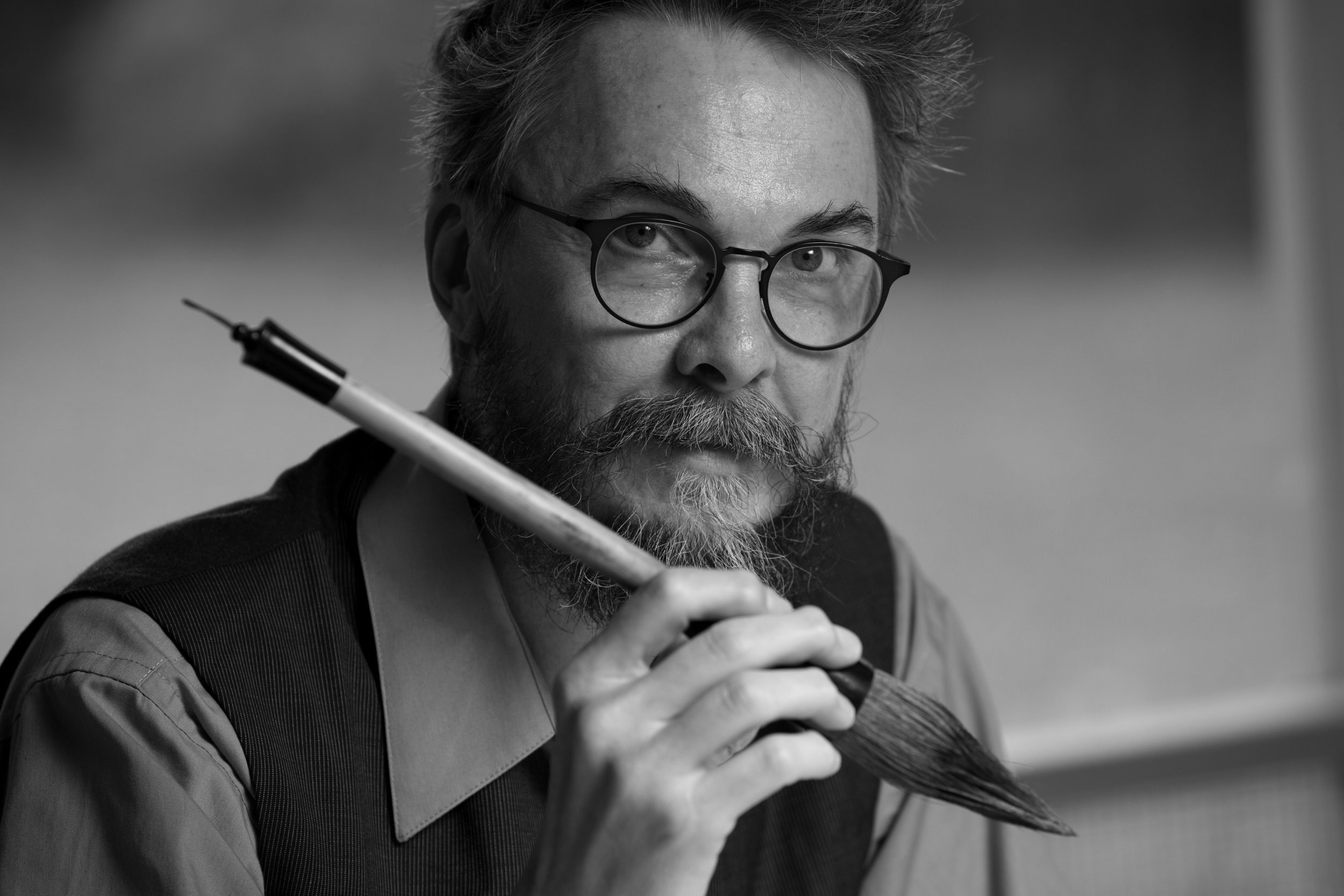Jon J Muth
“ It’s very important to me not to offer something that’s going to inoculate them from their own experience. I want children to recognize that what they’re actually going through is valuable. Their experience of something is important to the way they’re going to look at the world. ”
Author and illustrator Jon J Muth inherited his passion for the graphic arts while growing up as the son of an art teacher. Muth's mother took her son to museums across the United States, exposing him to the works of a wide variety of paintings, prints, drawings, and other art forms. Muth debuted his paintings and drawings in a one-man invitational exhibit at age eighteen at Wilmington College. Determined to expand his influences, Muth traveled throughout England, Austria, Germany, and Japan, studying not only drawing and painting, but also stone sculpture, sho (brush calligraphy), and printmaking in classes and as an apprentice.
Muth began his professional career working as a comic-book illustrator, and quickly established himself as a talent in that field. In addition to developing and illustrating the groundbreaking Moonshadow series written by J. M. DeMatteis and portions of Neil Gaiman's well-known Sandman comic-book epic, Muth also wrote and illustrated several original story arcs based on existing characters and published in their entirety as graphic novels, among them Dracula: A Symphony in Moonlight and Nightmares for Marvel Comics and Swamp Thing: Roots for DC Comics. For him, comic-book illustration is "a natural forum for expressions of angst and questioning one's place in the universe."
With the birth of his own children, Muth naturally began to turn toward children's literature, and he took account of a new potential audience with the need to hear other messages. In addition to illustrating texts for a variety of children's-book authors, he has also created original texts to pair with his highly praised watercolor art. In The Three Questions, based on a story by noted Russian writer Leo Tolstoy, Muth encouraged young readers to consider the needs of others as well as oneself when making decisions. "When is the best time to do things? Who is the most important one?, and What is the right thing to do?" are the questions raised in the author-illustrator's gentle story about a boy named Nikolai who learns to rely on the natural wisdom of animals. In Publishers Weekly, a reviewer praised Muth's "misty, evocative watercolors" as well as the text, which is "moral without being moralistic," while in Kirkus Reviews a critic dubbed The Three Questions "a soaring achievement."
Zen Shorts contains another simple story that poses three thoughtful questions and imparts a resonant message based on Zen teachings. In this tale, a giant panda named Stillwater appears at the home of three children. Over several days, Karl, Michael, and Addy each spend time alone with Stillwater as the bear shares both fun and Zen stories, while also posing a philosophical question to each child. Noting that the author includes a valuable commentary about Zen at the book's conclusion, Booklist contributor Gillian Engberg wrote that, for even young readers, "Stillwater's questions will linger … and the peaceful, uncluttered pictures … will encourage children to dream and fill in their own answers." Coop Renner noted the value of Zen Shorts as a teaching tool, commenting in his School Library Journal review that the "visually lovely" book draws on familiar images to "prod children to approach life and its circumstances in profoundly 'un-Western' ways," while a Kirkus Reviews contributor concluded: "Every word and image comes to make as perfect as picture book as can be."
Related Exhibitions: Zen Tales: The Art of Jon J Muth (2016)


